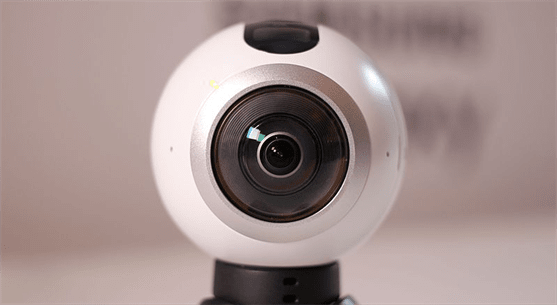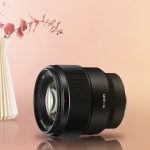
Definition of a 360-degree camera
You probably haven’t noticed but you’ve seen 360-degree images in social media all the time. A 360-degree camera is able to visualize the field of an entire sphere, while in other words, in photography, they just call it a camera that can capture a 360-degree field of view in the horizontal plane.
If you were wondering, these cameras are actually widely used in robotics or panoramic photography, to be exact, in such situations a larger visual field is required, so 360-degree cameras are perfect for the job.
A more detailed overview of 360-degree cameras
In the camera industry, as it is standard, most cameras have a field of view of 180-degrees, and rarely larger than that, which basically means that these cameras are able to capture the light falling onto the focal points that they have, through a sphere. But that’s not really the case with a 360-degree camera since it captures the entire sphere while it can also capture light that falls from all directions straight onto the focal point.
In practice, the majority of 360-degree cameras are able to cover almost a full sphere along the equator, however, it excludes the bottom sphere and the top sphere. If they were to capture the entire sphere, in this case, the bottom and the top, the rays do not meet at a single focal point, so there’s that.
What are they mostly used for?
These type of cameras have a wide range of applications, while they still continue to enhance, improve and get developed even more to this day, other applications for the use of this camera are being found and invented every day.
Some of the most common applications for a 360-degree omnidirectional camera are for panoramic photography, robotics, and computer vision.
Before the 360-degree omnidirectional camera was invented, for panoramic photography people used to stitch shots that they’ve taken from different angles, to create a 360-degree panoramic image, and it was pretty intense actually. What made this hard to do was because each time you’d take shots from different angles, the lighting would change, so when you stitch your images into one computationally, you’d get mixed up results, and the final quality of the shots was not guaranteed due to these deficiencies.
So as you can imagine, with a 360-degree camera, you can easily use it for panoramic shots, while you’d save yourself from having to take multiple shots and to stitch them afterward, and in such cases, with a 360-degree camera, you take a shot of the entire sphere with the same lighting conditions, thus, the quality of the image would be more attractive.
Since we mentioned Robotics and Computer Vision, these type of cameras are also widely used in such applications, due to their ability to solve simultaneous localization and mappings as well as for visual odometry. Of course, people are always looking for a better optical flow, feature matching and feature selection in robotics, while a 360-degree camera can effectively capture a 360-degree field of view, and this pretty much fits the task perfectly in such applications.
360 camera sensors
If you didn’t know, 360-degree cameras consist of dual sensors one after the one behind each lens. As technology has improved, nowadays, the majority of 360-degree cameras can record 4K at 30p, while some more high-end models such as the Garmin VIRB 360, they can even record 5.7K footage.
But there’s a downside to these cameras, considering the fact that 360-degree cameras have small sensors, and plus they have a wide field of view, oftentimes, dynamic range and exposure will be a problem. To be more precise, every highlight will be easily over-exposed, while most shadow areas will lack detail. If you think about it, this is pretty logical, because a 360-degree camera captures the entire sphere which means it mixes up exposure from all of the light and dark across the 360-degrees.
360 degree shots take a loot of space though, so you should also get an external ssd for photography to securely store your images.
How to frame the perfect shot with 360-degree cameras
To avoid such scenarios, you’d have to find a dynamic perspective, as some 360-degree cameras are mostly limited to mini tripods or plug into your phone, some others are compatible with a wide ecosystem of mounts.
In addition, this will simplify your process since you can attach the 360-degree camera to your bike, head, wrist, car, and so on. Each 360-degree camera comes with an app, so the app is likely to offer a live preview of the scene, while you’ll be able to see what the camera captures at the moment, and fine-tune accordingly. If you ride bikes and want to shoot videos, i recommend you also take a look at our list of the best action cameras for motovlogging.
Conclusion
Just as we said, 360-degree cameras are widely being used for different applications across the world, and as they get more engraved in the industry, new powerful low-cost 360-degree cameras are expected to enter the market very soon.
Having all these options available, it can be frustrating to find a proper 360-degree camera, and as technology improves every day, some cameras will lack the features that the other has, even though they were released during the same year. This sounds pretty much like smartphones, with Samsung being ahead of the iPhone in terms of features, even though they are always released during the same year.

Photographer & Writer
I specialize in landscape, street and portrait photography and I have been featured in various galleries and publications. I believe that photography is a way to tell stories!



